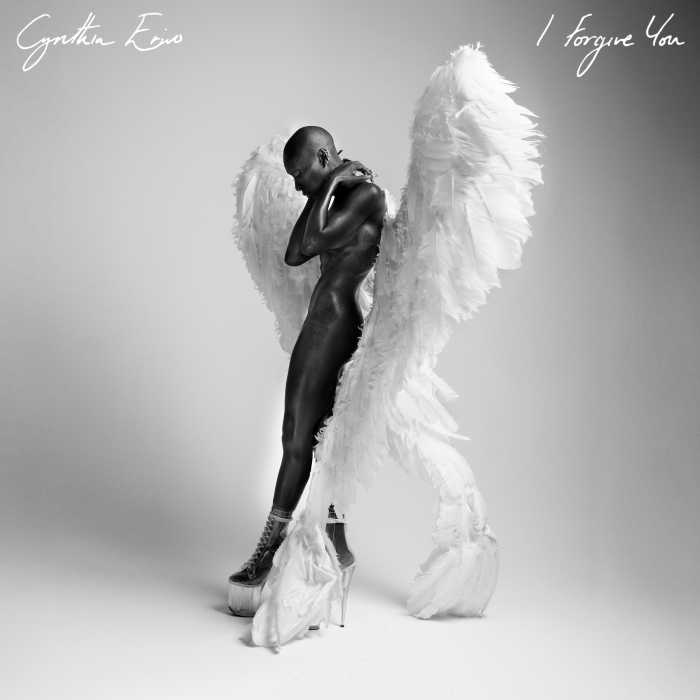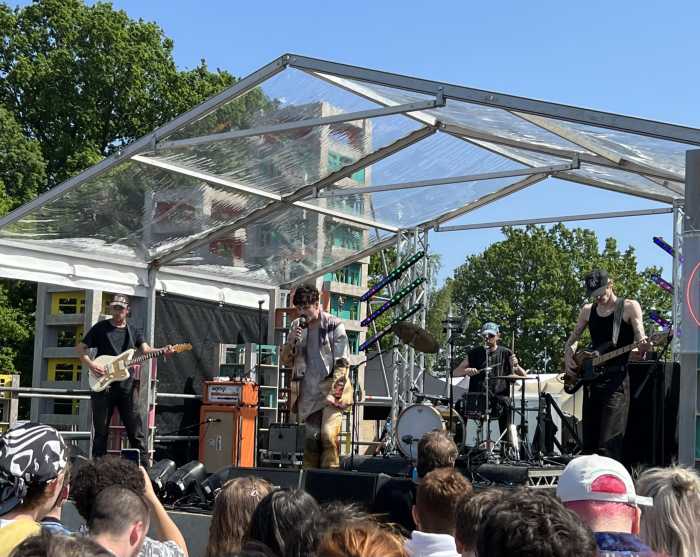Blue Man Group’s Peter Musante. | NAT MAY
Yanira Castro’s dance-making enterprise, a canary torsi, creates site-adaptable, installation-based performance projects. Her work invites audiences to participate in live performances that extend into other media platforms. Ranging from formal movement and immersive audio installations to fictional Twitter feeds and interactive websites, Castro’s dances explore the relationship between spectator and event, providing opportunities for the audience to dramatically impact the performance.
Her latest project, “The People to Come,” is a participatory performance installation. This multilayered project encompasses an interactive website, a physical archive at the Invisible Dog Art Center, and a live performance where dancers and musicians create new work in front of the audience.
User-generated content performance installation from Yanira Castro and crew
Yanira Castro’s first collaboration with Invisible Dog was in 2010 with her sensually interactive “Wilderness.” Invisible Dog, which opened in 2009, was a relatively new venue, and this partner-presentation with Dance Theater Workshop was its first performance production that lasted longer than one night –– two weeks to be exact.
“It was a big moment for them,” said Castro. “It was a big moment for us.”
It was the beginning of a beautiful friendship.
Last summer, Castro was invited to perform at a special Invisible Dog event. The solo she performed was “never meant to be seen live. It exists in the archive on video.” Those involved loved it so much it became the scaffolding for the new work, which is “a piece about process.”
In addition to working with ballet-trained Simon Courchel from Invisible Dog and longtime dancer-collaborators Luke Miller, Darrin Wright, and Peter Schmitz, whom she describes as “having so much history in his body,” Castro sought out someone who was “not like us but who wouldn’t be afraid to be physical.” Enter Blue Man Group performer Peter Musante.
“He has no dance background,” Castro said, but clearly no fear of physicality.
The performers learned the solo “only as a skeleton to be used in the process,” explained Castro. “The original solo was 19 minutes, so everything is structured on that time signature.”
Ten solos in all are conducted over the space of the four-hour performance.
“The environment for the piece is very open,” the choreographer said. “Without giving too much away, there are two stages and various ways you can position yourself.”
The space includes benches and cushions, but not enough for everyone.
There will be a lot going on.
“It begins quietly,” Castro described, “with someone gathering material from the archive and someone rehearsing. As an audience member, there are lots of options — interacting with a dancer in the archive, watching the rehearsal area, the performance area, seeing both at the same time, following one performer, or trying to sit far back and take it all in.”
Luke Miller’s interpretation of a portrait provided by an audience member. | NAT MAY
The archive will be open from 1 p.m. to 10 p.m. the day of each performance, which allows audience members to work with the archivist in creating and sharing images, videos, and text that will be interpretively integrated into the performances. Student groups are also coming in to contribute to the process, and material can be submitted online at thepeopletocome.org.
Ten submissions will be used by the performers to make each of the solos.
“For example,” explained Castro, “three portraits, five patterns, and two tasks.”
Likewise, the score is a chance composition made from as few as one to as many as four out of 100 crowd-sourced, pre-recorded 37-second movements layered over each other plus the contributions of up to two live musicians on top of that, who are obliged to respond to the recorded score.
The dancers make all the choices about what material to use, including costumes, the guidelines for which Castro broadly defined to them as “layers of blue.”
“Structured as the piece is,” she added, “ I have no control over it. It’s really shaped by the dancers and the audience — not just by their contributions, but by how they attend to it.”
Which is what makes this approach to broad collaboration work so well. Audience members may never know if the dancers have used their contribution but still see it in places it isn’t. Everyone is invited to make something together –– and inspired to believe their contribution matters.
YANIRA CASTRO/ A CANARY TORSI | “The People To Come” | The Invisible Dog Art Center | 51 Bergen St., btwn. Smith & Court Sts., Brooklyn | Jun 25—29, 6-10 p.m. $10; information at 347-560-3641 or thepeopletocome.org
“The People to Come” relies on audience-generated content. Material can be submitted to the archive at the Invisible Dog Art Center, which will be open before and during the performances. Also on view is a collection of more than 700 submissions created by audiences during last year’s performances. Submissions can also be made at any time on the project’s website at thepeopletocome.org. Submissions from New York will be posted daily.




































